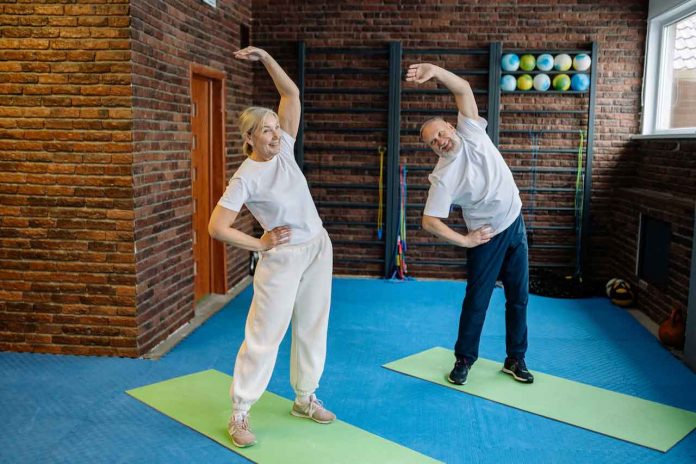Over the world, millions of people of all ages and demographics suffer from urinary incontinence. Urinary incontinence affects people’s everyday life, self-esteem, and overall well-being.
The frequency of this condition, which causes inadvertent leaks, highlights the critical need for management solutions that are both effective and timely. But for many, there is comfort in the knowledge that urine incontinence may be effectively controlled with the right support and proactive measures.
This article will discuss eight tips for assisting people with urine incontinence, providing them with newfound control over their health and a better quality of life.
- Use Absorbent Products
Managing urine incontinence with absorbent goods is a useful and empowering tactic, especially when it comes to preventing issues like adult diaper rash. Absorbent pads and adult diapers are some of the items that give people security and confidence to go about their daily lives.
People can discover the most efficient and pleasant solutions for their needs by trying out several products. These products support a happier and more active lifestyle in addition to providing leak prevention.
For those who are managing urine incontinence, incorporating absorbent goods into their routine improves comfort and fosters a sense of normalcy and freedom.

- Consult with a Healthcare Professional
Seeking help from a doctor is one of the most important things a patient has to do when treating urinary incontinence. The impact of urinary incontinence may differ, and healthcare professionals can do the whole examination to recommend the right treatment plans relevant to the individual.
The solution will be tailored to each case. It could be a change of lifestyle or, in very severe cases, surgical interventions, and a medical professional can guide individuals toward an effective and tailored approach.
Speaking with a specialist also helps in comprehending the type of condition one has. It contributes to the independence gained by making an informed decision on how best one can manage urinary incontinence.

- Pelvic Floor Exercises
Pelvic floor exercises are very significant as a main management of urinary incontinence. These exercises (also known as Kegels) are the contraction and release of the pelvic floor muscles, which leave the bladder control and prevent urine incontinence.
Repeated and adequately executed Kegel’s exercises will tighten these muscles responding to the overactive bladder and decrease the number of leakage episodes. Specific personalised physical therapist expertise is of great importance, thus ensuring individuals carry out exercises correctly as they should.
Incorporating pelvic floor exercises into your daily regimen is helpful for urinary incontinence self-management. It also leads you to become a more engaged and empowered individual regarding your pelvic health and your overall wellness.
- Maintain a Healthy Lifestyle
Effective management of urine incontinence requires adopting a healthy lifestyle. Constipation can worsen incontinence; however, regular bowel movements can be achieved with a balanced diet and adequate water.
Regular exercise that keeps you at a healthy weight relieves pressure on the bladder and improves its performance. Furthermore, avoiding things that can irritate you, such as alcohol, coffee, and spicy meals, will lessen the chance of incontinence symptoms.
By giving people useful tools for better bladder management and a higher quality of life, these lifestyle changes significantly lessen the effects of urine incontinence.
- Schedule Regular Bathroom Breaks
Regular breaks for the use of the toilet are a preventive measure for the patient who has urinary incontinence problems. Urinating, even in the absence of any urge to do so, keeps bladder function regulated and helps avoid the typical “stooping too late” accident.
Scheduling a proper routine for bathroom visits with reasonable breaks helps the bladder stay in control. This tactic should not allow the bladder to be heavily loaded, reducing the opportunity for urgency and incontinence episodes.
- Train Your Bladder
An important part of treating urine incontinence is bladder training, a behavioural method. In order to improve control, train the bladder to hold more urine and gradually lengthen the duration between bathroom visits.
For bladder training to be effective, even if it can be difficult at first, consistency is necessary. Retraining the bladder function can be achieved by deliberately postponing urination and gradually increasing the intervals.
Patience is crucial as this process takes time, but the potential benefits in terms of improved bladder control can significantly enhance one’s quality of life. Consulting with medical professionals helps create a customised and successful bladder training program.
- Manage Stress
For those who are experiencing urine incontinence, stress management is crucial. Since stress aggravates symptoms, it’s critical to integrate stress management practices into everyday living.
Practices like yoga, mindfulness, meditation, and deep breathing lower stress levels and improve overall well-being. Using these methods improves the physical elements of urine incontinence as well as its emotional resiliency.
Stress management can help people manage their condition more holistically, enhancing their quality of life and bladder control.
- Seek Emotional Support
An important part of managing urine incontinence is getting emotional support. With friends, relatives, or support groups, one might gain empathy and understanding by sharing experiences that can profoundly impact the sufferer.
Further helpful resources for addressing the mental anguish brought on by incontinence may be found in counselling or therapy.
Establishing a support network creates a safe space to discuss challenges and exchange coping strategies and ultimately fosters a sense of empowerment and resilience in dealing with the emotional aspects of urinary incontinence.
Bottomline
The approach, which requires all the medical interventions, lifestyle changes, and emotional support, needs a holistic approach to manage urinary incontinence. Consultation with health professionals and seeking emotional support are effective in dealing with urinary incontinence.
Bear in mind that each person’s experience is different, and the most suitable mix of methods can be found only through patience and continued work with healthcare professionals.







